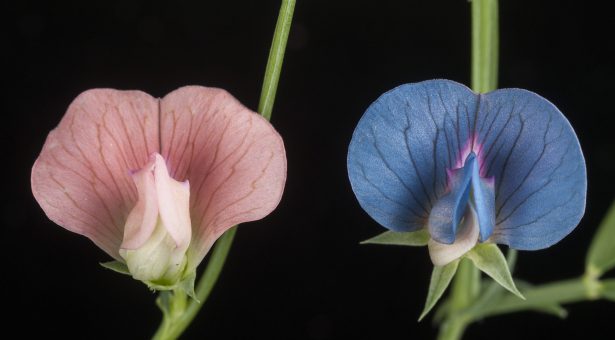An insurance crop to be made safe

Scientists are collaborating with researchers in India on projects designed to enhance and safeguard food production overseas and in the UK.
The British Biotechnology and Biological Sciences Research Council (BBSRC) have awarded two projects to John Innes Centre scientists – one looking at grasspea toxicity and the other at disease in potatoes and wheat.
Professors Cathie Martin and Trevor Wang are leading the project on grasspeas with an agricultural university in West Bengal (Bidhan Chandra Krishi Viswavidyalaya) and – closer to home – the National Institute of Agricultural Botany in Cambridge.
Grass pea is a food staple, especially in India and East Africa, due to its remarkable drought tolerance. It reliably provides a protein-rich foodstuff for human and animal consumption, often able to grow when no other crop can stand the environmental conditions.
The downside is a toxic compound known as ODAP, eating high concentrations of which can lead to a crippling disorder known as lathyrism. This condition leads to irreversible paralysis of the legs. ODAP is thought to be essential to cause lathyrism, but humans are more susceptible to the disease if already malnourished, as drought stricken communities are indeed prone to be.
John Innes Centre researcher Peter Emmrich said: “This is a golden opportunity to apply modern breeding methods to an under-developed crop with such high potential for the poorest regions of the world.”
The researchers aim to remove or reduce ODAP to safe levels in grass pea, and to improve its nutritional and agricultural qualities. The research will not only make a highly drought resistant crop safer for the areas in which it is currently grown, but allow expansion and reintroduction of the crop to other regions.
In a separate study, Dr Brande Wulff from the John Innes Centre, with colleagues at the adjoining Sainsbury Laboratory on the Norwich Research Park, will be taking a genetic approach to identify genes in potato which control resistance to late blight and genes in wheat controlling resistance to wheat stem and stripe rust.
Dr Wulff said: “Wheat and potato are two of the most important crops worldwide, including India and the UK. However, stem rust in wheat can cause crop losses of up to 100%, and the fungus which causes it has developed new strains which have overcome the resistance that the plants had developed. Potato late blight, the disease which caused the Irish Potato Famine in the 1940s, is also still a serious impediment to farming – pesticides can control it but these are at odds with sustainable agriculture and simply unaffordable for subsistence farmers in developing countries.”
Working with colleagues in India, Dr Wulff and his team will identify genes in the plant, which control resistance, with the long term view of combining multiple resistance genes to improve disease resistance durability.



